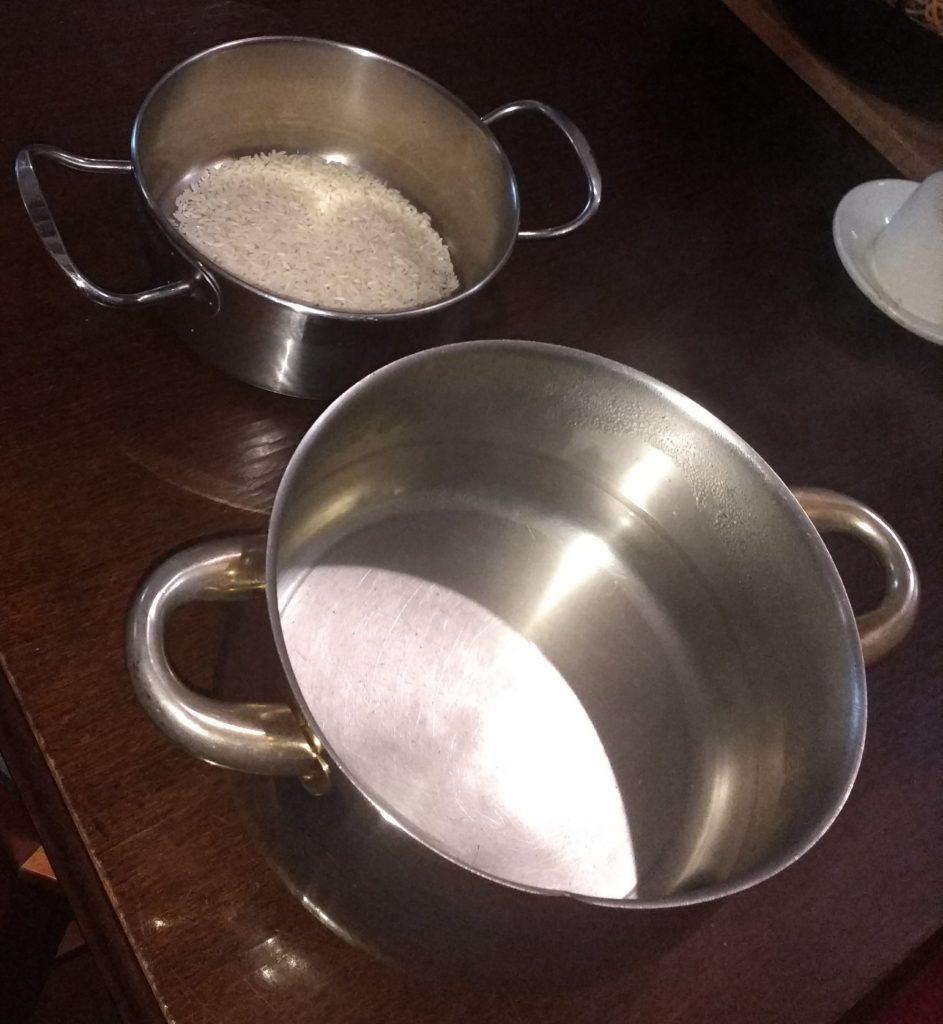Koncepcję Efektywnych Mikroor-ganizmów (EM) opracowano we wczesnych latach 80. XX w. na Uniwersytecie Ryukus na Okina- wie. Jej twórca, profesor Teruo Higa odkrył, że połączenie około osiemdziesięciu różnych rodzajów mikroorganizmów może korzyst nie zmieniać proces rozkładu ma- terii organicznej, a nawet nada-wać mu „życiodajny” charakter.
W skład mieszanki Efektywnych Mikroorganizmów wchodzą dob- roczynne i niepatogenne drob-noustroje, np. bakterie kwasu mlekowego, drożdże i bakterie
fototroficzne, które występują w środowisku naturalnym.
Tłumacząc działanie Efektywnych Mikroorganizmów, Higa powołał się na zasadę dominacji. Wyróżnił trzy typy drobnoustrojów: konst- ruktywne (regeneratywne), ne-
gatywne (gnilne, degeneratywne) oraz oportunistyczne.
Uwarunkowania ekologiczne każ- dego środowiska (gleby, wody, powietrza, skóry, jelit) zależą w dużej mierze od dominującego typu mikroorganizmów. Kluc- zowe znaczenie ma proporcja drobnoustrojów konstruktywych i degeneratywnych, ponieważ oddziaływanie mikroorganizmów oportunistycznych może być po- zytywne lub negatywne w za- leżności od dominującej tendenc- ji. Środowisko zdominowane jest
obecnie przez mikroorganizmy negatywne (np. te odpowiedzial ne za rozkład materii organicznej i wywołujące choroby). Neutrali zacja różnego rodzaju nieczystoś-
ci, które masowo wytwarza czło wiek i jego działalność, to kwestia coraz bardziej paląca dla ludzi i środowiska na całej planecie.
Higa był zdania, że można korzy stnie wpłynąć na dane środowisko wprowadzając do niego mikroor- ganizmy konstruktywne. Uważał, że da się zmienić mieszankę robnoustrojów i nadać Efektyw nym Mikroorganizmom dominu jącą rolę.
EM po raz pierwszy znalazły zastosowanie jako bezpieczna alternatywa dla syntetycznych substancji chemicznych wykor zystywanych w rolnictwie. W
toku szeroko zakrojonych badań i eksperymentów, z biegiem czasu znajdowano dla nich nowe zas tosowania, lecz mimo to wiele pozostaje jeszcze do odkrycia.
Po wprowadzeniu do środowiska naturalnego, EM sprzyjają zdro wemu środowisku mikrobowemu.
A practical guide to make Effective Microorganisms [EN]
Hi there!
Today I’ll write about making your own culture of EM (Effective Microorganism). We’ve wrote about EM in two previous articles:
In this guide I’ll elaborate the method a bit more, and show you a few photos.
In this moment I’m making EM cause I need them for two reasons:
- I need to clean the pipes of the kitchen sink in my house. Recently, the water start flowing down more slowly and I believe there is an accumulation of organic matter in the pipes.
- I’m experimenting with a small-size, balcony-type, earth-worm-powered compost, and I want to boost it regularly with EM like you would do on Bokashy Compost.
I’ll write down the instructions as well as my personal considerations and photos around the whole method here below:

- Take a handful of rice, let’s say 80-100 grams and put it in a container. Of course, you should use ecologic, integral and unprocessed rice for this purpose.
Notes: Workshop on Effective Micro-organisms [EN]
Hi !
I will post today this notes taken from a workshop I was participating a while ago, with some overview on the method to cultivate and use the Effective Micro-organisms (EM).
Effective micro-organisms
When we’re talking about effective micro-organisms (EM) we mostly mean a bunch of different species of micro-organisms with beneficial effects for processes in all natural environments. Effective Microorganisms consist of beneficial and non-pathogenic microorganisms such as Lactic Acid Bacteria, Yeast and Phototrophic Bacterias, which are found in many places in the nature: on our skin, in the water, in the air, in the food etc. By choosing certain kinds of micro-organisms and by increasing their amount in a certain place we can positively affect the environment in different ways.
Continue reading “Notes: Workshop on Effective Micro-organisms [EN]”
What are the Effective Microorganisms (EM)? [EN]
Effective microorganisms (EM)
were developed in the early1980s at the University of the
Ryukyus in Okinawa, Japan by Professor Teruo Higa. He reported that a combination of approximately eighty different species of microorganisms are capable of positively influencing the decomposition of organic matter to the point at which it reverts to a ’life promoting’ process. These Effective Microorganisms consist of beneficial and non-pathogenic microorganisms such as Lactic Acid Bacteria, Yeast, and Phototrophic Bacteria, which are found in the natural environment.
Higa invoked the dominance principle to explain the effects
of his Effective Microorganisms. He claimed that three groups of microorganisms exist: positive microorganisms (regeneration), negative microorganisms (decomposition, degeneration), and neutral microorganisms. The ecological condition of any medium (that is soil, water, air, skin and intestinal) is hugely dependent on what type of microorganisms are dominant. The ratio of positive and negative microorganisms is critical, since the neutral, opportunist microorganisms follow the trend of regeneration or degeneration. Nowadays negative microorganisms (e.g. those responsible for the rotting of organic matter to maladies in organisms) dominate much of the sphere of the microorganisms in the environment. Treating the variety and massive volume of waste produced by societies and human activities has become an increasingly critical issue for humankind and the global environment.
Higa claimed that it is possible to favorably influence the given media by supplementing it with positive microorganisms. In short, it is possible to change the diversity of microorganisms so as to make effective microorganisms dominant.
Continue reading “What are the Effective Microorganisms (EM)? [EN]”

